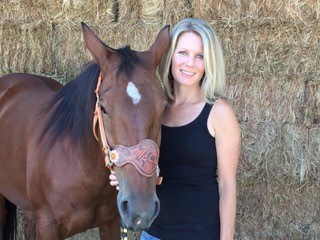Melanoma Risk in Gray Quarter Horses Studied
- Topics: Article, Quarter Horses, Tumors & Melanoma
Researchers have announced some good news for Quarter Horse owners and breeders: Gray Quarter Horses could be less susceptible to developing melanomas than grays of other breeds.
A University of Minnesota research team, led by Molly McCue, DVM, MS, PhD, Dipl. ACVIM, and her PhD student Raffaella Teixeira, DVM, MS, Dipl. ACVIM, recently evaluated melanoma prevalence and severity in 335 gray Quarter Horses. They hypothesized that both could be lower than in other breeds because of the predominance of the chestnut coat color (caused by a specific gene mutation) within the Quarter Horse population. Previous studies on melanoma prevalence have been limited to the Lipizzaner, Pura Raza Espanola, and Camargue breeds—all breeds in which the gray coat color is either predominant or breed-defining, Teixeira said.
The team also evaluated whether melanomas present in the study horses were affected by three genes—syntaxin-17 (STX17), which plays a role in the gray coat color; agouti-signaling protein (ASIP), which controls the distribution of black pigment; and melanocortin-1-receptor (MC1R), which plays a role in the chestnut coat color—responsible for hair coat color, two of which (STX17 and ASIP) were previously implicated in melanoma susceptibility in horses.
“Graying and melanoma have been linked to a mutation in the STX17 gene,” explained Teixeira
Create a free account with TheHorse.com to view this content.
TheHorse.com is home to thousands of free articles about horse health care. In order to access some of our exclusive free content, you must be signed into TheHorse.com.
Start your free account today!
Already have an account?
and continue reading.

Related Articles
Stay on top of the most recent Horse Health news with


















